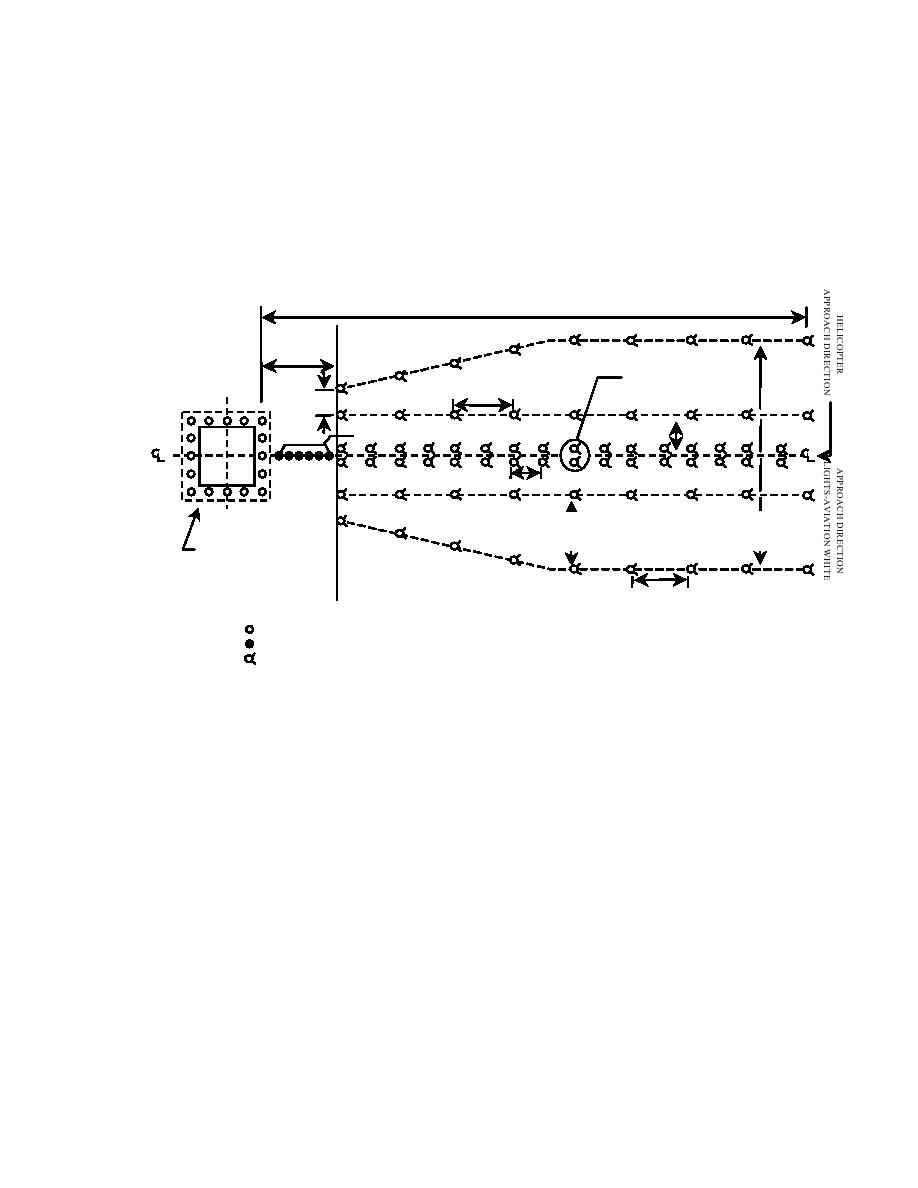
UFC 3-535-01
17 November 2005
7-3.3.2
Configuration of IMC Approach Lights
The approach lighting system will be symmetrical about, and extend for the entire length
of, the centerline of the helipad direction lights. This additional light system starts at the
position of the approach direction lights, shown in Figure 7-3, at 37.5 meters (125 feet)
from the helipad and extending out to 308 meters (1,025 feet), shown in Figure
7-5.
Figure 7-5. Approach Lights Category I
308M
(1025 FT)
38M
(125 FT)
EACH FIXTURE SPACED 5 FT
30M
FROM CENTER LINE
(100 FT)
6M
(20 FT)
15M
(50 FT)
LANDING DIRECTION LIGHTS
15M
(50 FT)
90M
30M
(100 FT)
(300 FT)
HELIPAD
(REF)
30M
(100 FT)
(1)
NOTES:
Elevated or semi-flush omni-directional light fixture with luminous features.
(2)
Normally elevated omni-directional light fixture with luminous features.
(3)
Normally elevated uni-directional light fixtures.
(4)
Elevated light fittings to be frangible with break-off point at top edge of base mounted plate.
(5)
Mount light fixtures on a horizontal plane and no more than 0.45 meters (18 inches) above grade of the helipad.
Where deviation of the horizontal plane is necessary, tolerance is to be +2% or -1% in the longitudinal slope.
Where a slope is established for the landing direction lights, continue the same slope for the approach direction
lights.
(6)
Glide slope and
glide slope angle
setting angle
setting angles:
3 degrees
6 degrees
8 degrees
11 degrees
9 degrees
15 degrees
(7)
If multiple glide slope angles are used, use the mean value of 11 degree setting angle. Three or five progressive
stages of brilliance are required for approach direction lights.
Intensities:
A. Horizontal plane 20,000 CDs beam spread 7.5.
B. Horizontal plane 5,000 CDs beam spread 12.5.
7-4
REFUELING AREA LIGHTS
Refueling areas are class 1, division 1, group D hazardous locations as defined in NFPA
70 National Electrical Code. See paragraphs 8-4 and 8-6.5 for more information.
7-5
HELIPAD FLOODLIGHTS
7-5.1
Purpose
Helipad floodlights may be used to illuminate the helipad surface at night to provide
visual cues to the pilot for determining his height above the surface during the
106


 Previous Page
Previous Page
